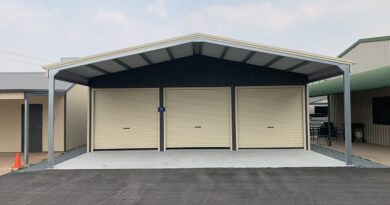Residential Architecture Trends: Designing Homes for the Future
The goal of designing houses for the future in the ever-changing field of residential architecture demands creativity, vision, and a thorough comprehension of sociological, environmental, and technological changes. In order to satisfy the changing requirements and goals of contemporary homeowners, architects and designers are redefining the concept of a home as we approach the dawn of a new age.
The design trends influencing residential architecture provide an insight into the homes of the future, ranging from flexible living arrangements to cutting-edge technologies.
Now, let us embark on a journey and discover the new architectural trends that will shape our homes in the future.
Embracing Sustainability
Trends in residential architecture are leading to an increasing focus on eco-conscious design and sustainability. Every residential architecture firm is incorporating eco-friendly materials, renewable energy systems, and green building concepts into residential designs due to growing worries about environmental degradation and climate change.
Sustainable elements, such as rainwater collection and passive solar architecture, energy-efficient appliances, and green roofs, not only improve the quality of life for residents but also reduce their influence on the environment.
Adaptable Spaces
Residential architecture is becoming more and more concerned with designing flexible and adaptable rooms that can quickly change to meet changing demands in response to changing lifestyles and demographic trends. Whether it is to accommodate a growing family, enable remote work, or promote intergenerational living arrangements, open floor plans, multipurpose spaces, and modular design components enable homeowners to tailor their living environment to their preferences. Architects enable clients to future-proof their houses against changing societal dynamics and lifestyle trends by highlighting scalability and adaptability. Furthermore, elements like aging-in-place design and universal design principles guarantee that houses are practical and accessible for occupants of all ages and abilities.
Integrated Technologies
The way we live, work, and engage with our environment is changing dramatically due to technological advancements, and this also applies to residential design. Architects are using technology to improve the convenience, efficiency, and usefulness of contemporary houses.
Examples of this include 3D printing, virtual reality simulations, and smart home automation systems. Technology is changing the way we plan, create, and live in residential spaces.
Examples include merging sustainable building practices with state-of-the-art construction processes and using smartphones to manage lighting, temperature, and security systems.
Resilient Residential Architecture
Residential architecture is putting more of an emphasis on resilient design techniques as extreme weather events like hurricanes, floods, wildfires, and heat waves continue to be a result of climate change. This is done to guarantee that homes can resist these challenges.
Elevated foundations to reduce the risk of flooding, reinforced building envelopes to withstand strong winds, and robust materials to endure temperature swings and severe weather conditions are some of the elements that architects are implementing.
Additionally, to maximize energy efficiency and lessen dependency on mechanical systems, passive design techniques including appropriate orientation, shading devices, and natural ventilation are used.
Architects are building safer, more resilient, and adaptable houses that can survive the effects of climate change and offer people protection and security in the face of environmental difficulties by putting a priority on resilience in home design.
Adapting Homes for Sustainable City Living
Residential design is changing to support sustainable city living as urbanization keeps growing and cities struggle with problems like traffic, pollution, and resource scarcity. To lessen dependency on private automobiles and cut down on carbon emissions, architects are putting a higher priority on small footprints, effective use of space, and integration with public transit and amenities in their house designs.
Furthermore, energy-efficient design, water-saving techniques, and rooftop gardens are examples of green building practices that are used to reduce their negative effects on the environment and increase urban biodiversity. In addition, there are an increasing number of mixed-use complexes combining residential, commercial, and recreational areas; these developments create lively, walkable districts that encourage community involvement and social interaction.
Architects play a vital role in fostering healthier and more livable urban settings that value equity, environmental stewardship, and people’s quality of life by designing houses that are sustainable for city living.
Final Thoughts
The future of residential design is being influenced by the merging of sustainability, flexibility, and technology as we navigate an increasingly complicated and linked world.
Architects and designers are not only making houses that are more ecologically conscious, adaptable, and efficient, but they are also improving the lives of occupants and establishing a closer bond with the places they live by embracing these trends and pushing the boundaries of innovation.
The possibilities are endless when it comes to creating homes for the future; they provide an insight into a world where creativity and imagination combine to redefine what a home is and to create living spaces that are technologically advanced, sustainable, and adaptable for future generations.
Also Read:




